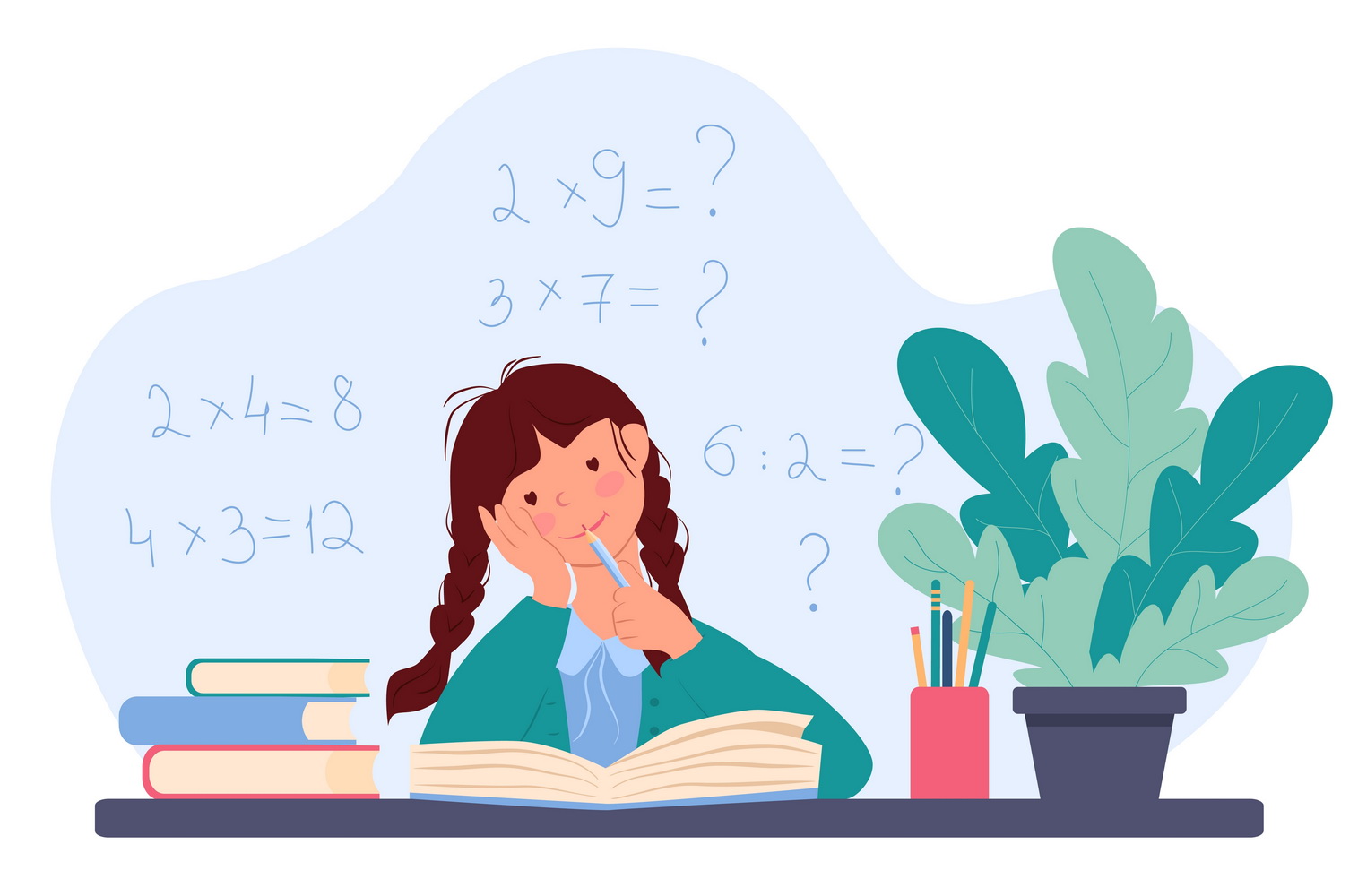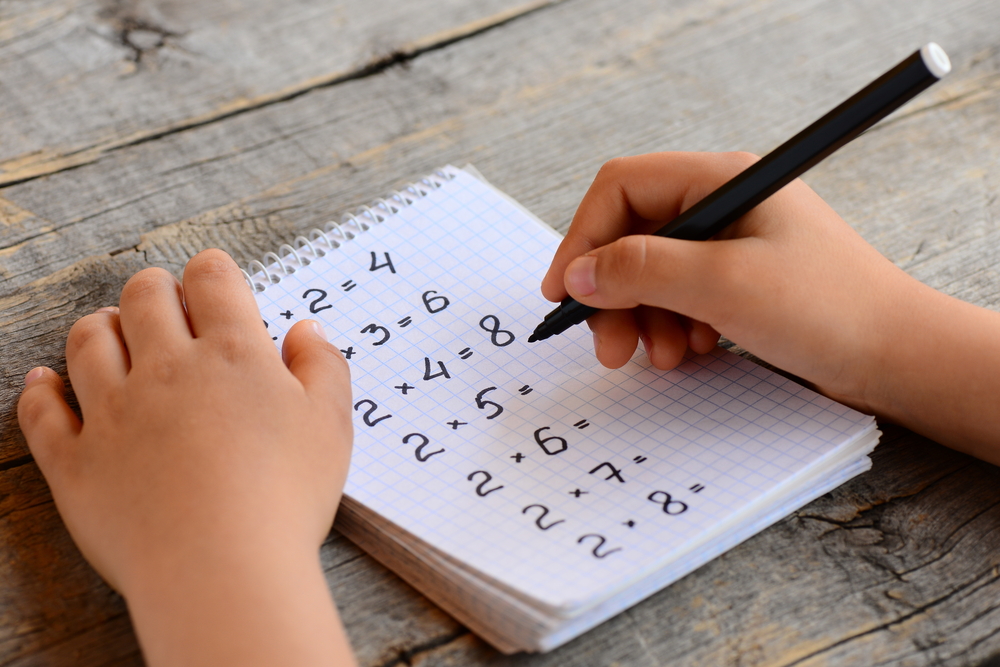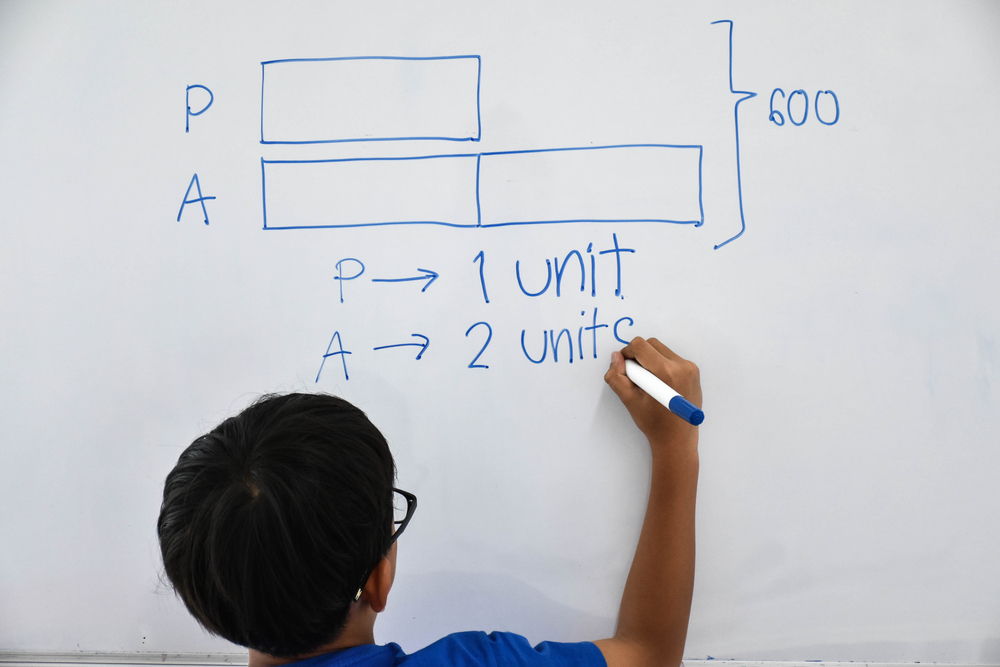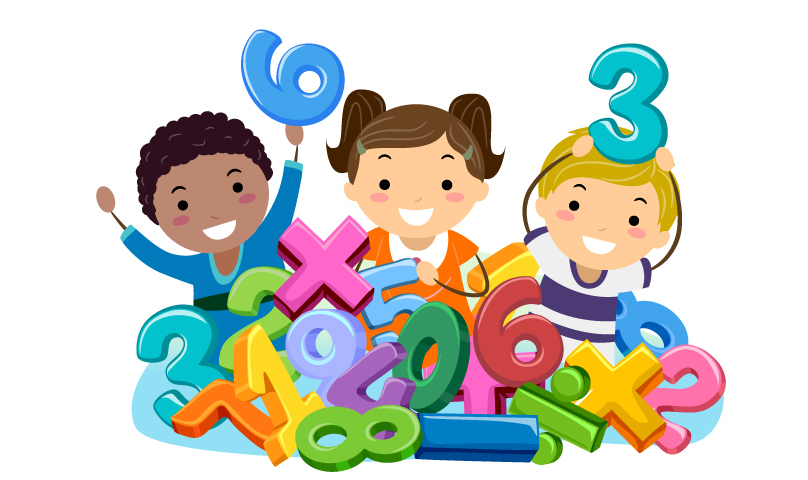Multiplication practice Arrays Worksheets for Ages 6-8
4 filtered results
-
From - To
Enhance your child's multiplication skills with our engaging Arrays Worksheets, designed specifically for ages 6-8. These interactive resources help young learners visualize multiplication concepts by arranging objects in rows and columns. Your child will develop critical math skills through fun and educational activities that encourage problem-solving and pattern recognition. Perfect for home or classroom use, our printable worksheets are easy to access and ideal for reinforcing multiplication facts with hands-on practice. Boost your child's confidence in math while making learning enjoyable. Dive into our collection and watch your young mathematician thrive with multiplication!
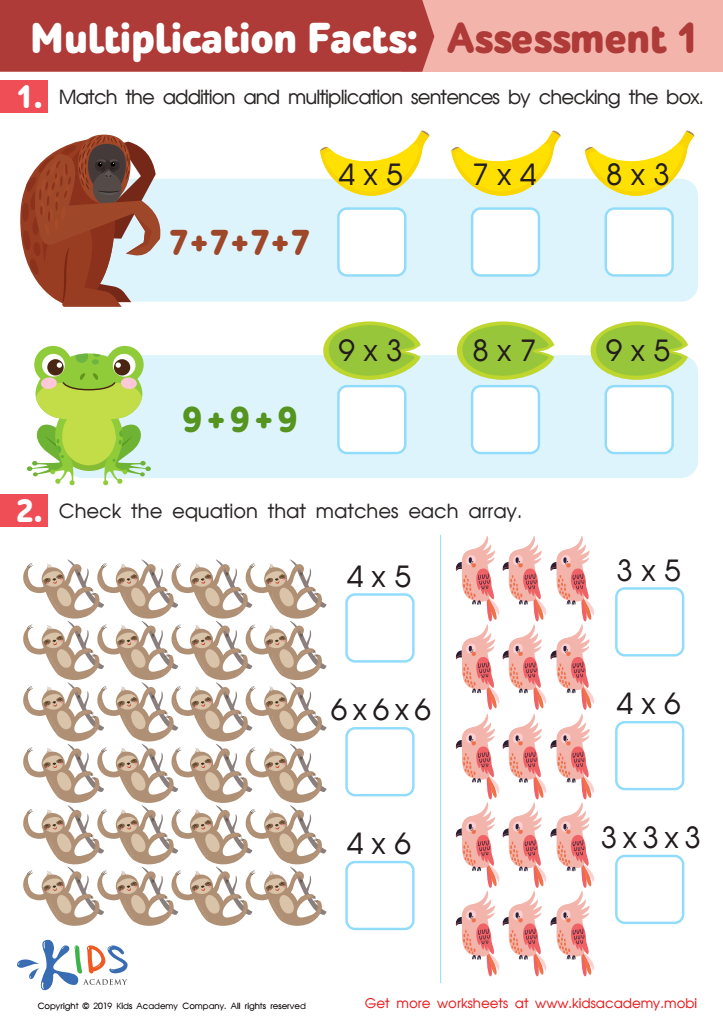

Multiplication Facts: Assessment 1 Worksheet


Arrays and Equations Worksheet
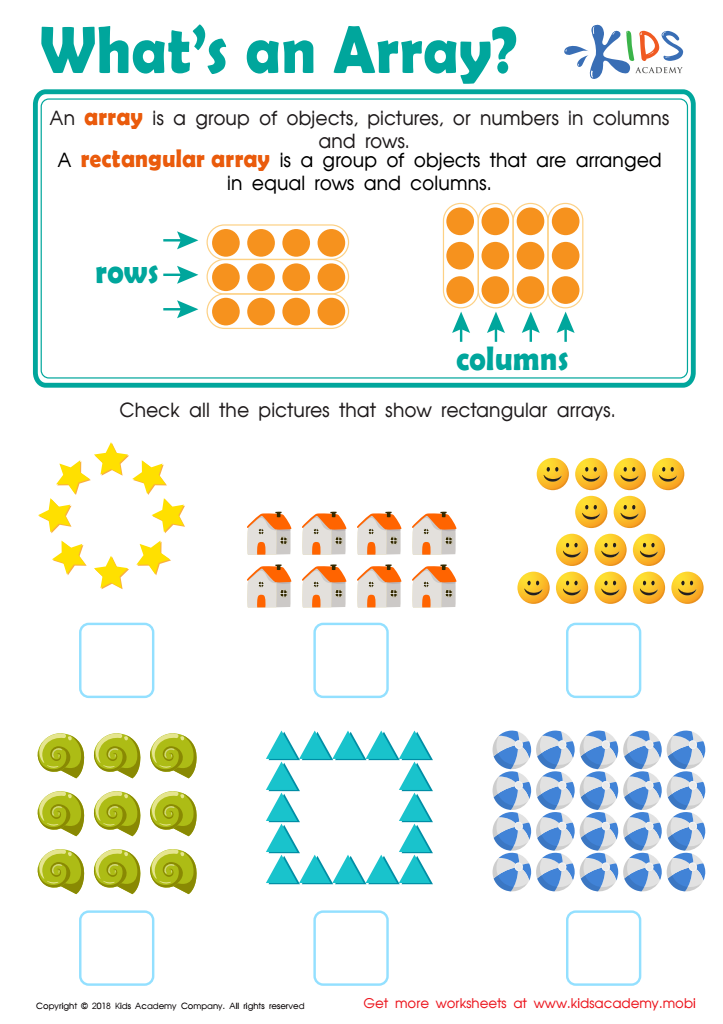

What's an Array? Worksheet
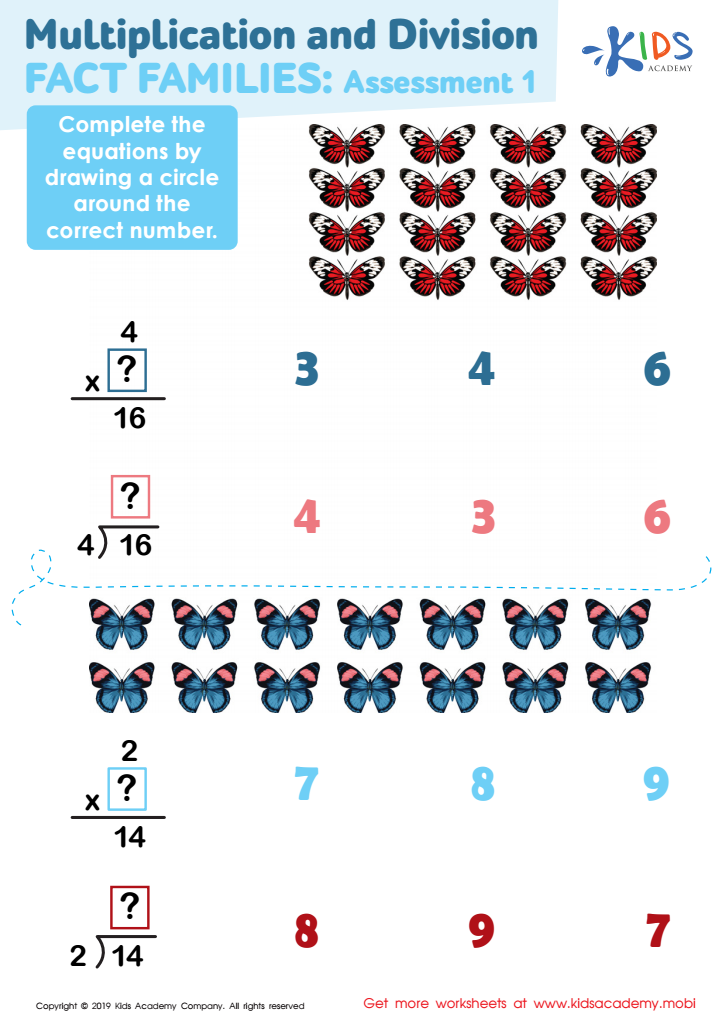

Multiplication and Division Fact Families Assessment 1 Worksheet
Multiplication practice using arrays is a crucial learning strategy for children aged 6-8, as it lays a solid foundation for their mathematical understanding. Arrays visually organize numbers in rows and columns, helping young learners grasp the concept of multiplication as repeated addition. This concrete visual representation fosters a deeper comprehension of the relationship between multiplication and addition, which is essential for future mathematical concepts.
Moreover, arrays make learning more engaging and interactive. Children can manipulate objects to form arrays, transforming abstract numbers into tangible experiences. This active involvement enhances retention and builds confidence. Regular practice with arrays aids in the development of critical skills, such as problem-solving, spatial awareness, and logical reasoning.
Additionally, mastering multiplication facts is vital for future academic success, as multiplication is a building block for more complex operations, such as division and fractions. By reinforcing this skill during these formative years, parents and teachers equip children with the tools needed for advanced math, ultimately fostering a positive attitude towards learning.
In essence, incorporating multiplication practice using arrays into daily routines not only promotes mathematical proficiency but also encourages creativity and critical thinking, setting the stage for lifelong learning and success.
 Assign to My Students
Assign to My Students




